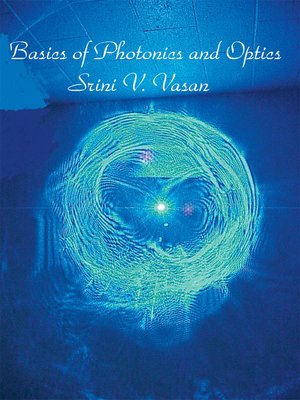
Sign up to save your library
With an OverDrive account, you can save your favorite libraries for at-a-glance information about availability. Find out more about OverDrive accounts.
Find this title in Libby, the library reading app by OverDrive.



Search for a digital library with this title
Title found at these libraries:
| Library Name | Distance |
|---|---|
| Loading... |
Basics of Photonics and Optics is an algebra-based book suitable for post-secondary technical/vocational education, as well as for high school photonics academy programs. It only requires the student to be familiar with high school algebra, geometry and some trigonometry. This book deals with just the appropriate material needed to enable a student succeed in foundation courses leading to an Associates Degree program in Photonics Technology.
The book is organized as follows. Chapter 1 reviews algebra fundamentals and graphing. Chapter 2 describes characterization of a photon. Chapters 3 and 4 discuss aspects of photonics/laser safety, laser operation and types of lasers. Chapter 5 describes rectilinear propagation of light to explain reflection and refraction phenomena. Chapter 6 delves into fiber optics. Chapter 7 discusses polarization of light. Absorption and scattering of light with an emphasis on optical filters are addressed in Chapter 8. Chapter 9 describes laser gain in depth, characterizes pulsed lasers and looks at some applications. Chapters 10 and 11 pertain to geometric optics, lenses, ray tracing, aberrations and optical instruments. Chapter 12 looks at interference and diffraction phenomena in wave optics and discusses applications.
The outstanding features of this book are the logical manner in which the chapters are laid out, a brief review of algebra and graphing early on in the book, conciseness, explanation of physical concepts in a simple, yet elegant fashion, numerous examples and exercises, and suggested laboratory experiments at the end of each chapter, besides its affordability. A set of thought provoking questions are provided under "Group Discussion Questions." Wherever applicable, a review of calculator use is provided. Answers to odd-numbered exercise problems are provided at the end of the book. Appendices at the end of the book provide quick reference to useful conversion factors, physical constants, general calculator review, metric prefixes and formulas useful in geometry, trigonometry and fiber optics.
Also by Srini Vasan: Technical Mathematics







